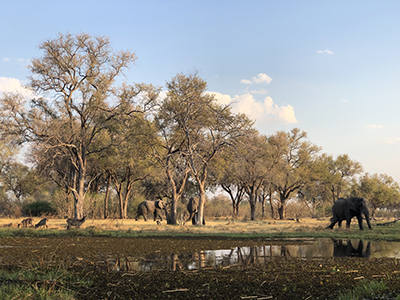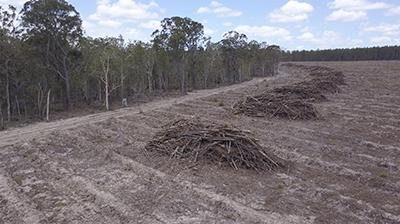
Fifty per cent of Earth’s surface* must remain vegetated if humanity is to meet international goals for maintaining essentials such as food, clean water, and air, according to new research.
Dr April Reside, from The University of Queensland’s School of Agriculture and Food Sciences, said that much more loss of Earth’s native environments than we have already caused may prove disastrous.
“We are facing crises on multiple fronts, including climate and biodiversity loss, and arresting the loss of natural ecosystems is key to resolving these crises,” Dr Reside said.
“Late last year, a new Global Biodiversity Framework was agreed upon at the United Nations COP15, which includes among its targets the protection of 30 per cent of land and 30 per cent of seas.
“However, our work shows these ambitions need to be set much higher if essential ecosystem functions and services such as soil health, clean air and water, and more, are to be maintained.
“We cannot set our ceiling at looking after only 30 per cent of the planet – instead, we need to maintain natural ecosystems over much larger areas.
“This ‘30x30’ narrative – 30 per cent of the protection of nature by 2030 – simply won’t be enough to ensure our survival.
“We need to think more broadly, to halt and, where possible, reverse the depletion of natural ecosystems.”
Dr Reside said changes in the way the biosphere is managed and exploited can make the 50 per cent vegetation target a reality.
The team identified and set out explicit goals for soil conservation, water quality regulation, climate regulation and biodiversity conservation from existing international agreements.
They then used existing models and global datasets describing soil erosion rates, carbon storage, important biodiversity areas and wetland and riparian areas, identifying what total area of the terrestrial land surface was required to achieve these goals.

UQ’s Professor Martine Maron said that this level of conservation was ambitious, but could be achieved in a variety of ways beyond simply establishing more formal protected areas.
“Creating more and better protected areas is great, but we must also create strong policy on deforestation, integrate nature with productive land uses, and support sustainable land uses that don’t deplete natural capital,” Professor Maron said.
“Such management can and should co-occur – and be driven by – people who live in and rely on places where natural and sustainably managed vegetation remains in place.
“And this must be complemented by restoration and appropriate management of more human-modified environments if our global goals are to be realised.
“Restoring areas that have become degraded aligns with another of the key targets in the new framework.”
The researchers hope that their findings make their way to policymakers around the world.
“Everyone needs to understand that we cannot afford to lose much more of what we have left,” Professor Maron said.
“Governments, conservation NGOs, business, and the public all need to get on board, and collectively we can rally to save what’s left while there’s still time.
“We ask a lot of nature – it regulates our climate, maintains clean water, stabilises soils, and supports all the species we share the planet with – so let’s work together to make sure we can continue to rely on these ecosystem services for generations to come.”
The research is published in Conservation Biology.
*Non-Antarctic land surface
Media: Dr April Reside, a.reside@uq.edu.au, +61 427 926 367; Professor Martine Maron, m.maron@uq.edu.au, +61 417 110 537; Faculty of Science Media, science.media@uq.edu.au, +61 438 162 687.



